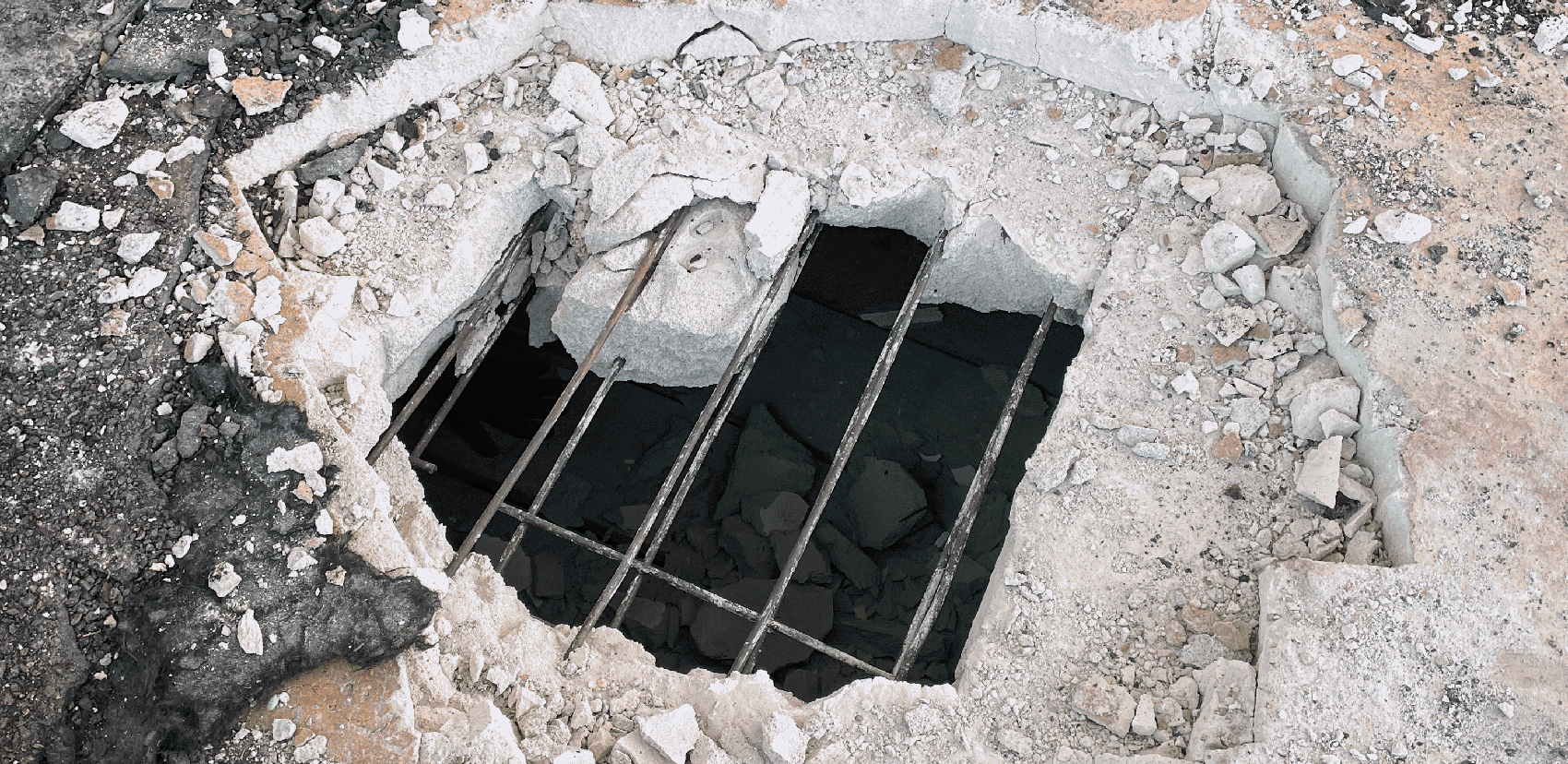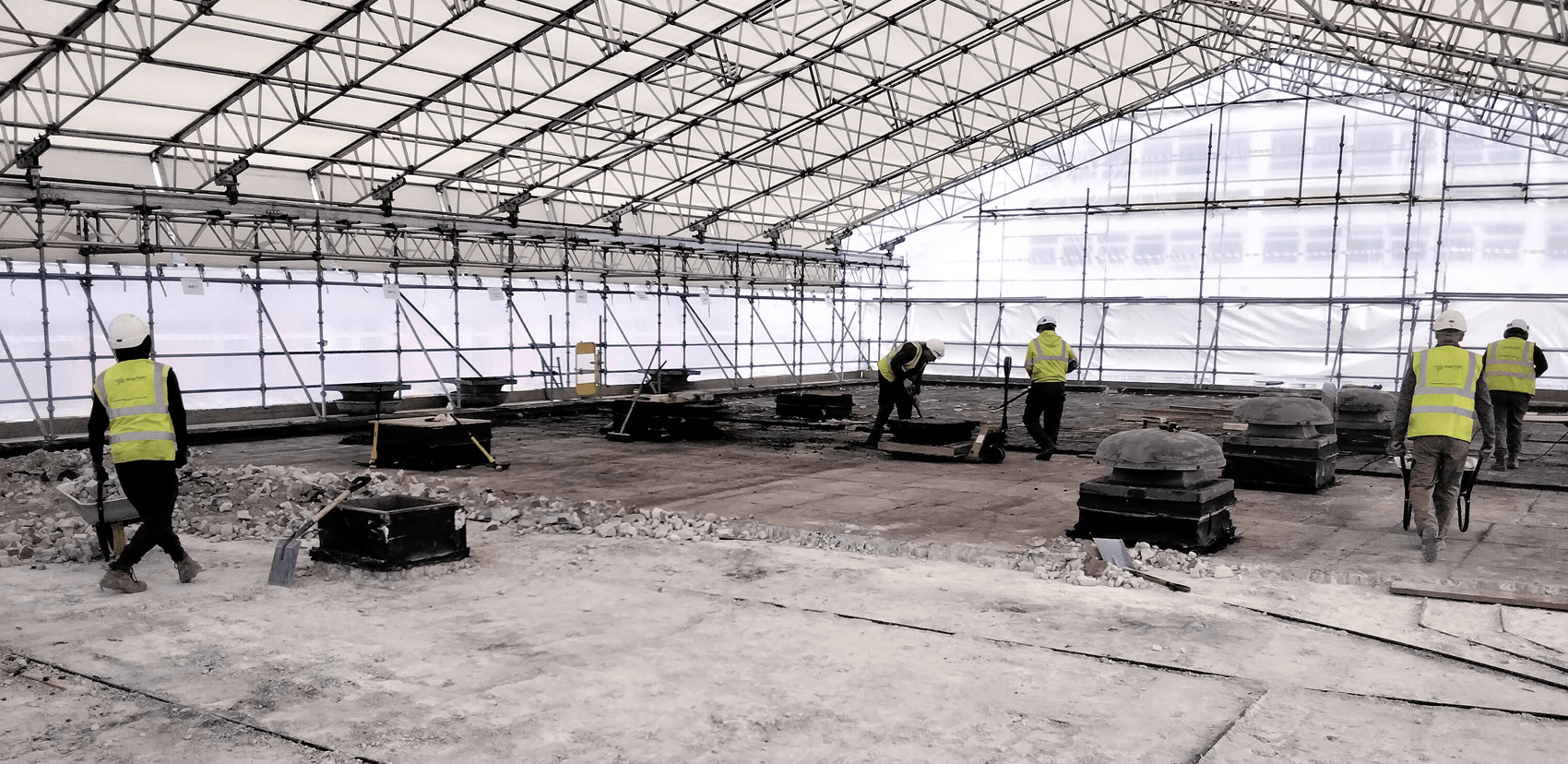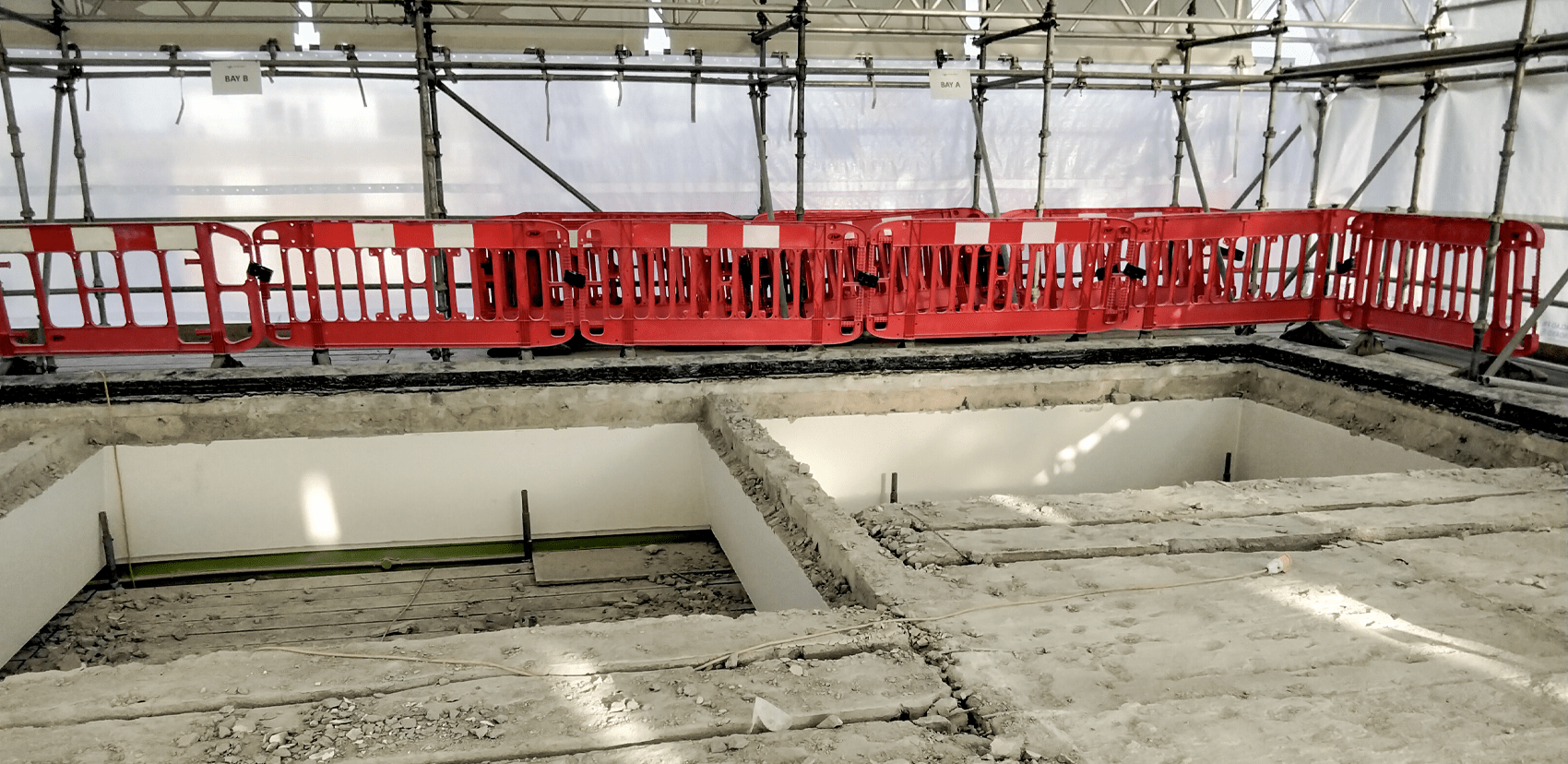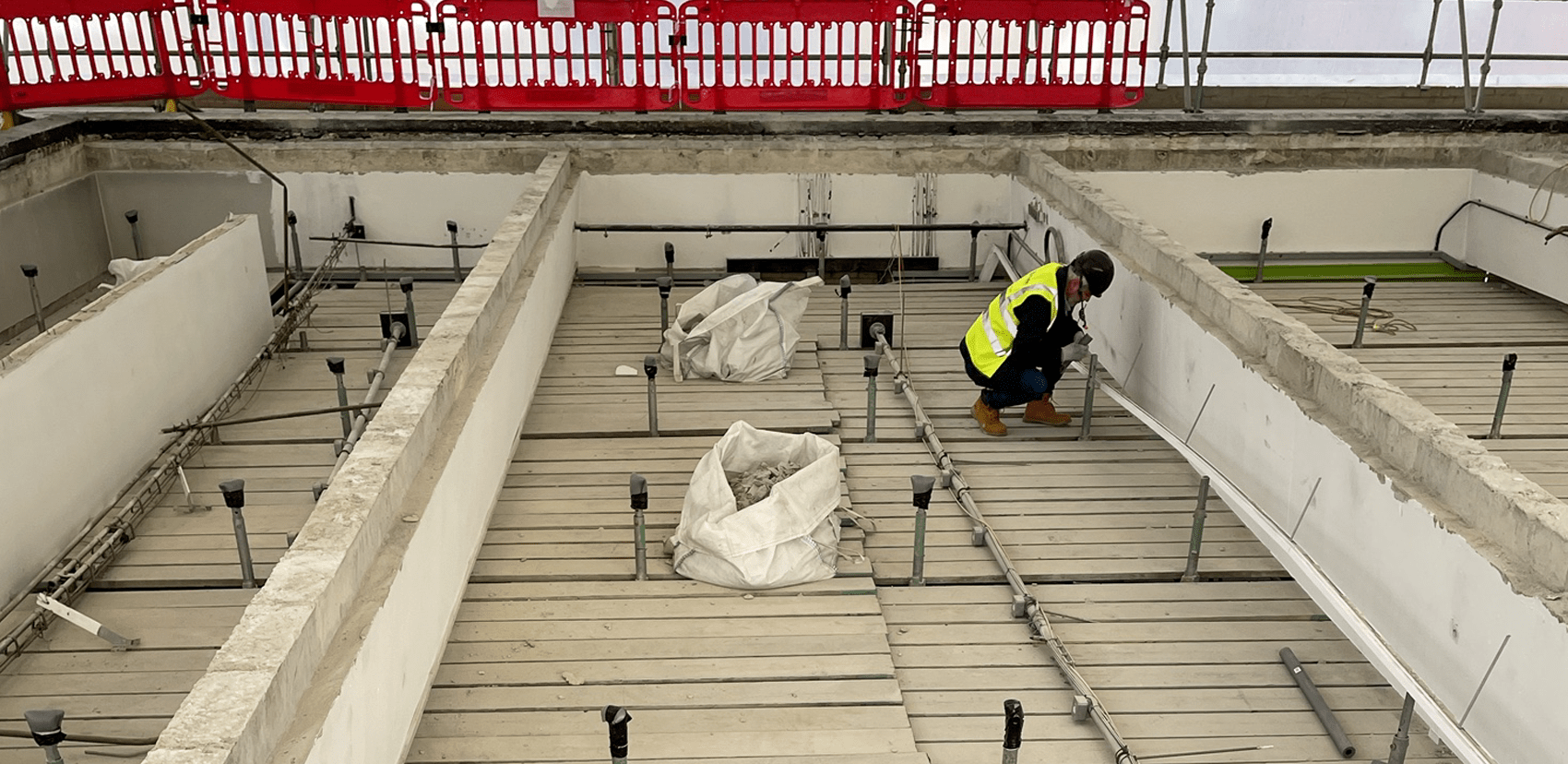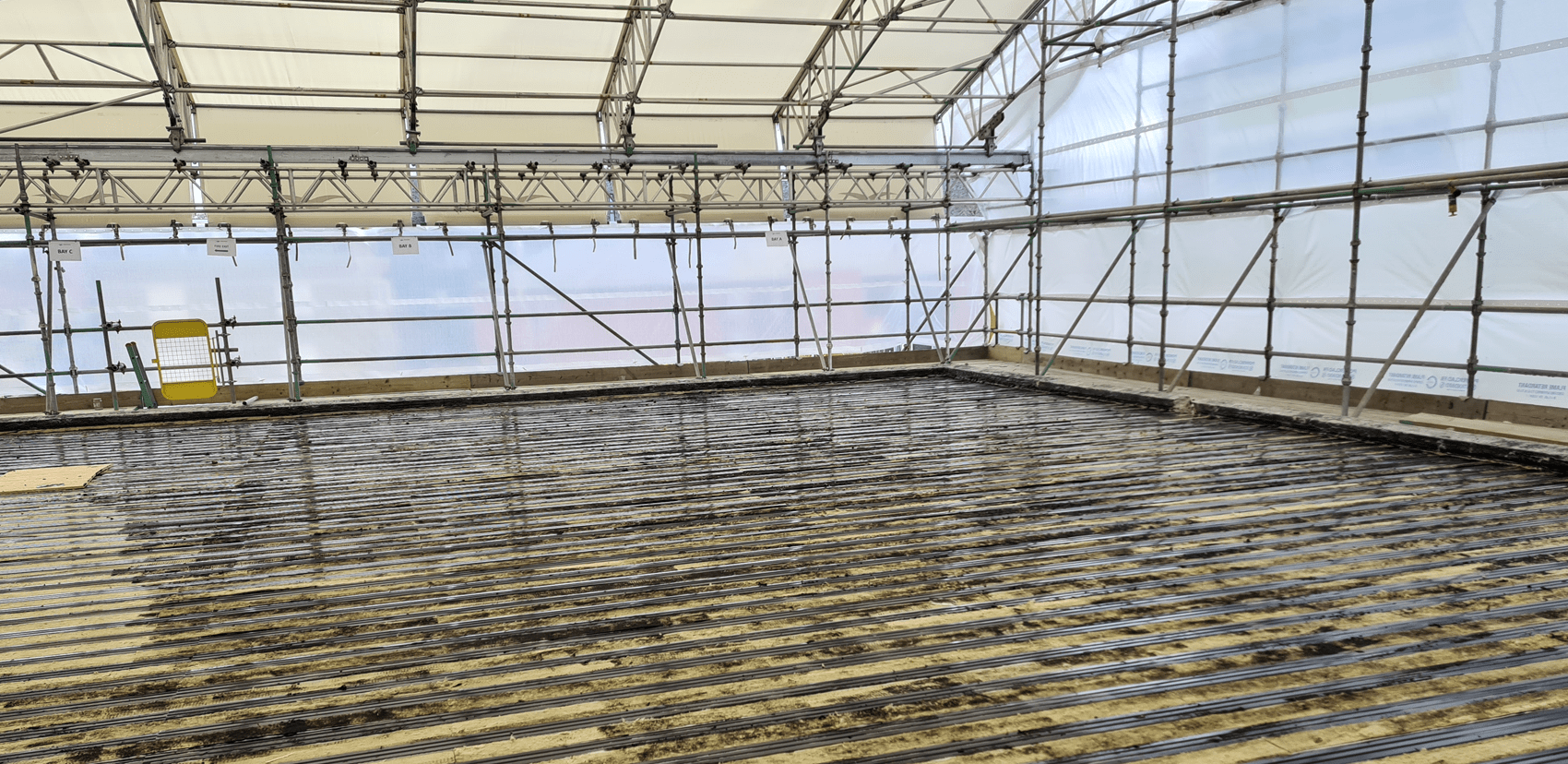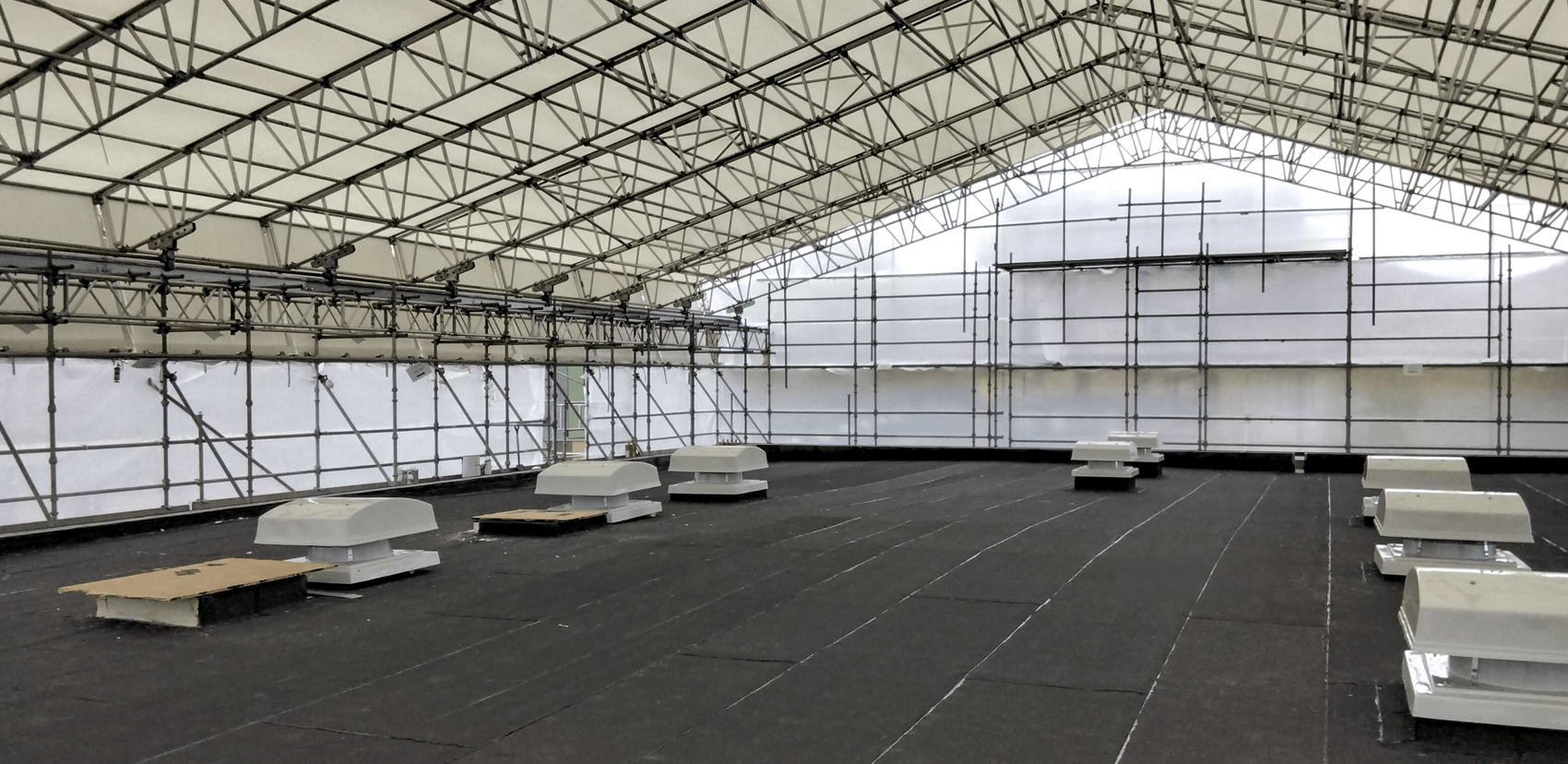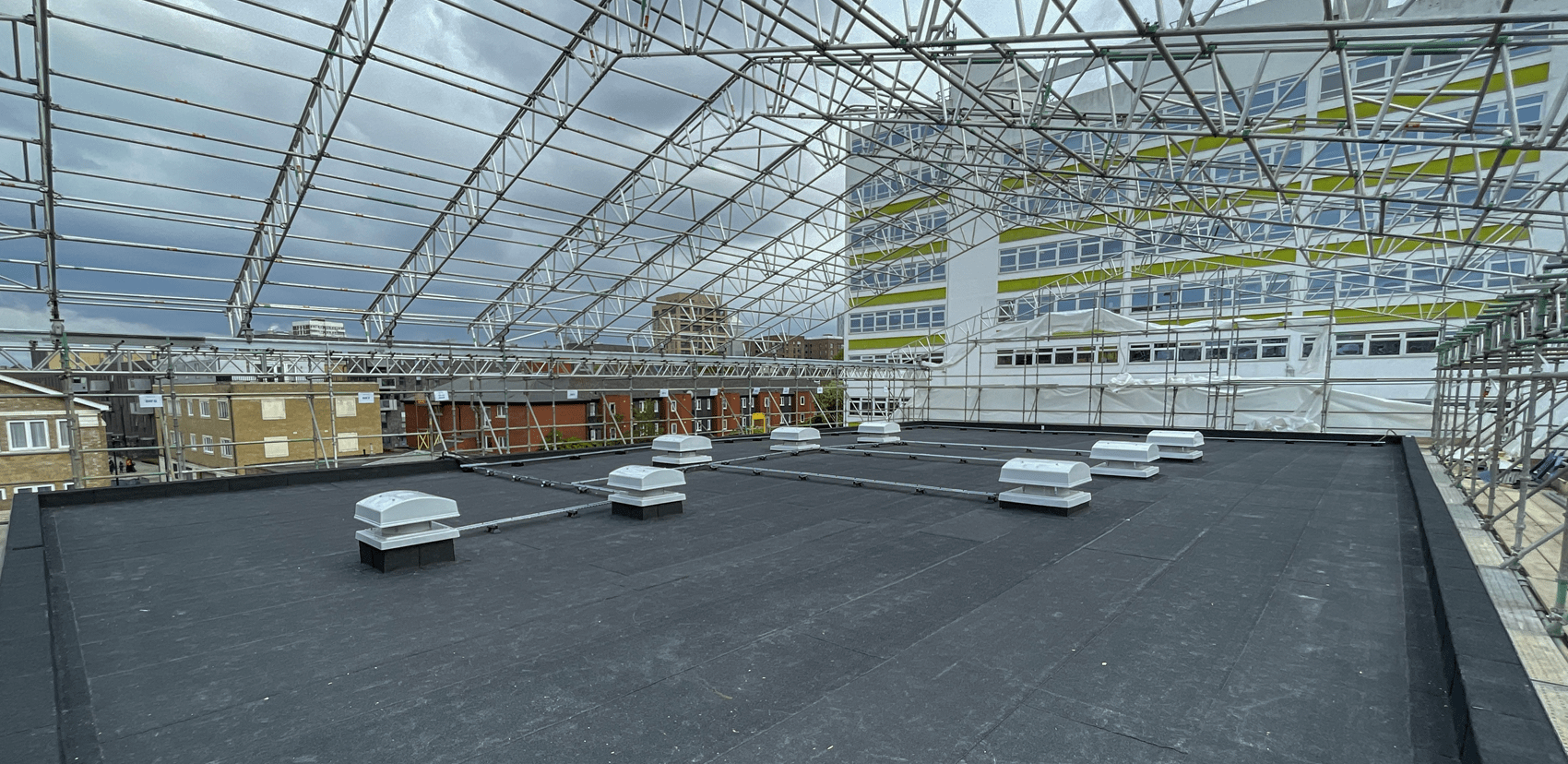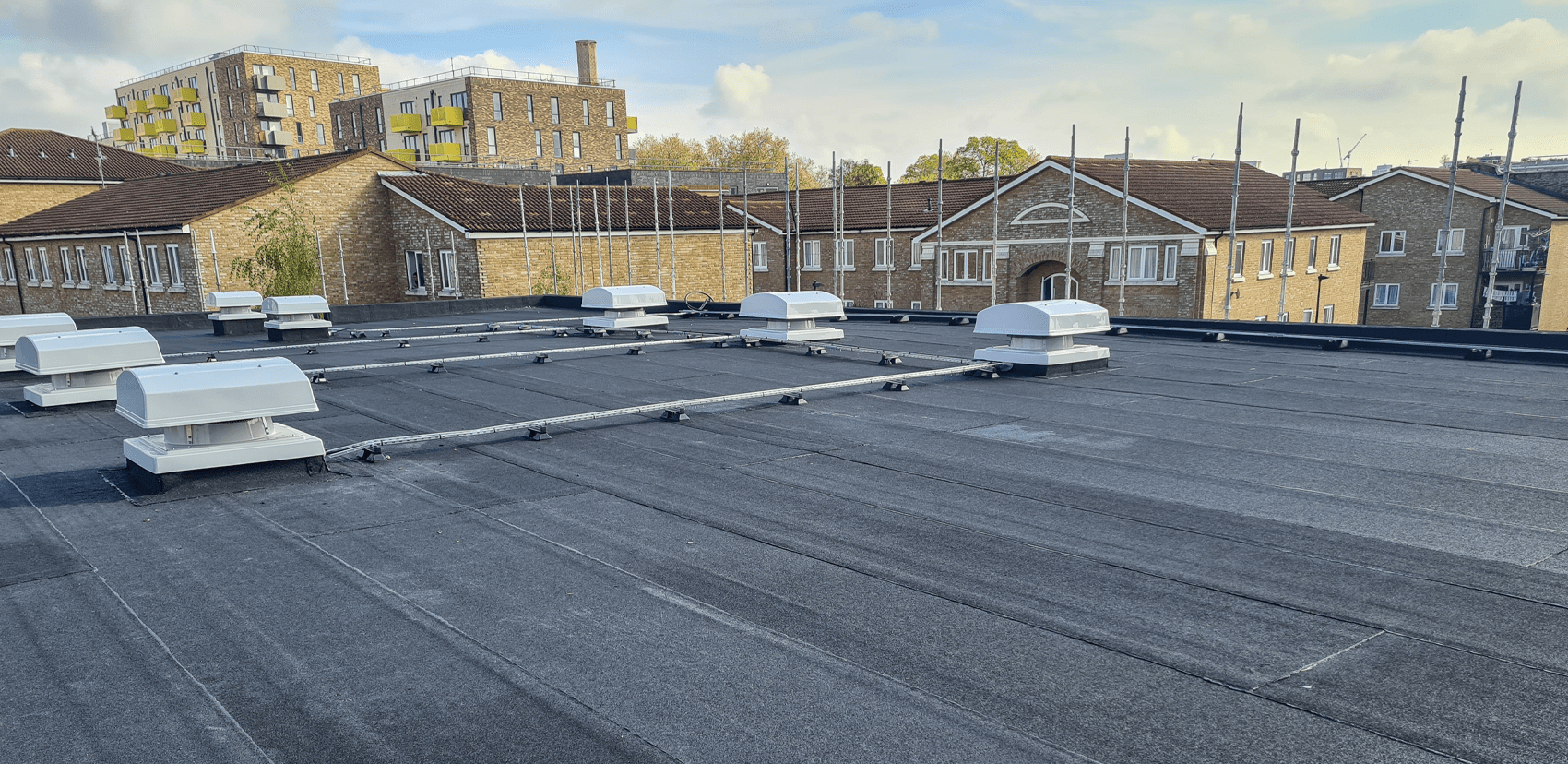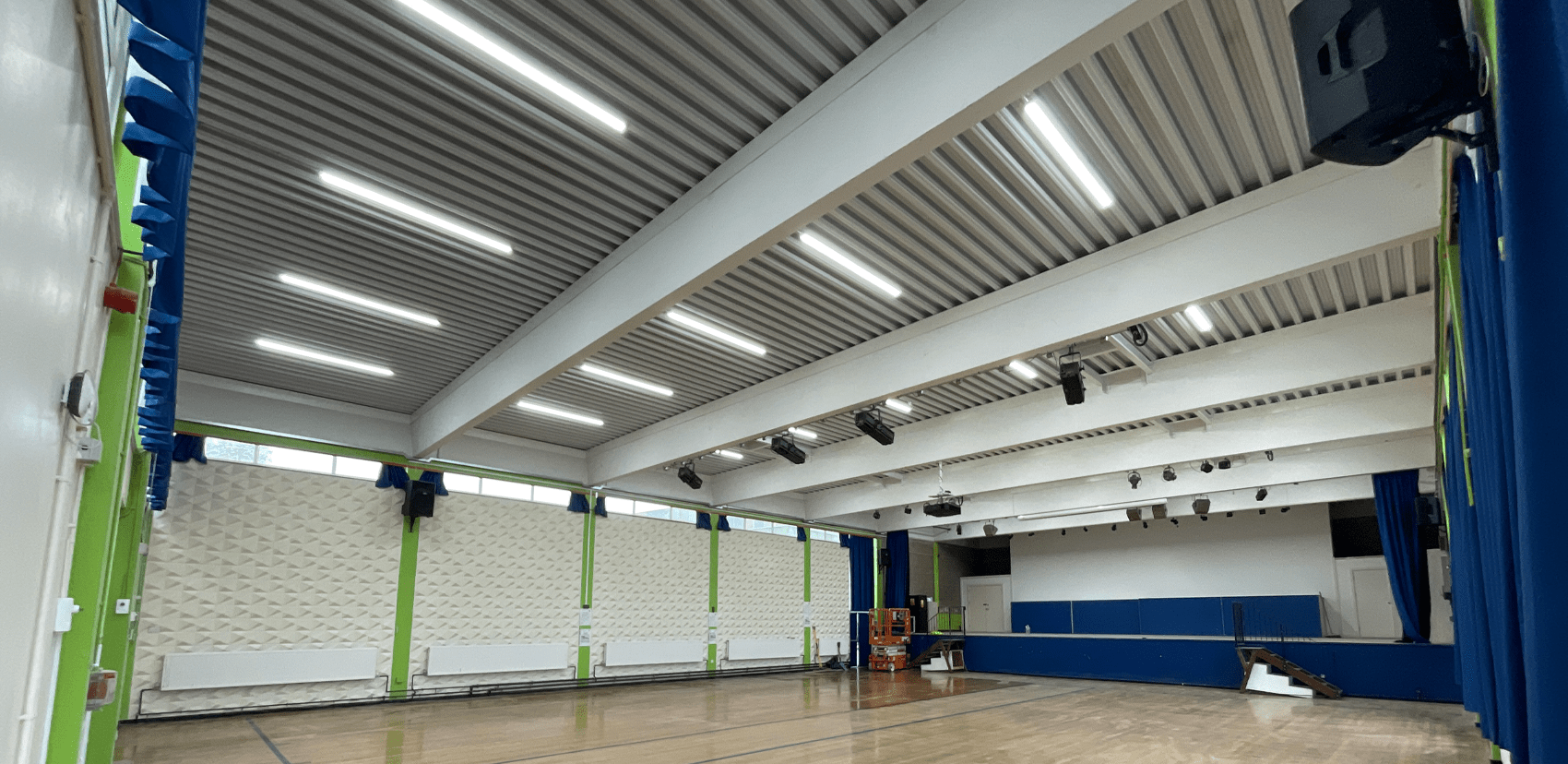Starfish Construction In Focus Insight Series - Exploring and Understanding Reinforced Autoclaved Aerated Concrete (RAAC)
Welcome to the latest entry in our Starfish Construction In Focus Insight Series. This ongoing series is a vital element of our commitment to leading the industry in knowledge transfer, providing our clients and the broader community with in-depth information and actionable insights into crucial aspects of building integrity and safety.
This edition features an interview with Jamie Purdon, Asbestos Director at Starfish Environmental and Asbestos Services, part of the Starfish Construction Group. Jamie brings his extensive expertise in asbestos management and building safety to discuss a critical and timely topic—Reinforced Autoclaved Aerated Concrete (RAAC).
Why This Interview Matters to Property Owners and Managers
As RAAC-related challenges emerge across the UK, property owners, managers and surveyors need to recognise the potential risks associated with RAAC to ensure the safety of buildings and occupants while adhering to Health & Safety regulations.
At a Glance:
- Understanding RAAC: We detail what RAAC is, where you may find it, and why it's problematic.
- Health Risks: Jamie explains the associated health risks of RAAC, highlighting the possible association with asbestos in buildings.
- Legislative Context: Understand the current legislative and safety guidelines affecting properties with RAAC.
- Starfish Construction's Role: Learn how our expertise and services provide comprehensive RAAC assessment and remediation solutions.
- Proactive Measures: Gather guidance for your next steps if RAAC is suspected or confirmed in your property.
This interview is an essential resource for anyone responsible for property management and safety. Jamie provides expert insights into effectively navigating these complex issues.
If properly designed, manufactured, in good condition and with good bearing, RAAC installations are considered safe. However, the panels can creep and deflect over time, and this can be exacerbated by water penetration. A more recent incident indicated that if they have insufficient bearing and their structural integrity is compromised, they can fracture and collapse with little or no warning.
The Institution of Structural Engineers.
Exploring RAAC remediation with Jamie Purdon.
Many thanks for joining us, Jamie, to explore RAAC and provide insight to our audiences. We know that RAAC is a material that is critical to understand and address if it is suspected or identified in your property, so let's jump into the conversation.
Q. Jamie, can you explain RAAC, its origins, and why it is a growing concern in the UK?
A. Sure, I appreciate the opportunity to share my knowledge of RAAC. It's a concerning aspect for some UK properties, and we're committed to educating owners and managers.
RAAC, or Reinforced Autoclaved Aerated Concrete, was a popular building material from the 1950s to the 1980s, and it was known for its lightweight and insulative properties. However, recently, RAAC has been identified as a risk factor in building integrity as it is susceptible to moisture, which can lead to structural failures. Many structures with RAAC are ageing, making them prone to collapse with little warning. Property owners should know and understand RAAC to maintain safety and comply with UK Health & Safety regulations.
Q. Can you explain the health risks associated with RAAC?
A. Concerns around RAAC is structural. However, buildings constructed with RAAC, especially those from the mid-20th century when RAAC was popular, may also contain asbestos, as it was commonly used in construction during that period, which poses serious health issues, including asbestosis and cancers like mesothelioma. Identifying and addressing the presence of RAAC allows us to assess and manage possible asbestos risks effectively simultaneously.
Q. Where is RAAC commonly found, Jamie?
A. It's a widespread building problem. Buildings within the education, industrial, retail, defence, commercial, and even residential sectors have extensively used RAAC. Like using asbestos fabric in construction materials, RAAC was also a common practice throughout the UK's construction industry. Any property constructed with flat, large-span roof panels during the mid-20th century could include RAAC. Property owners and managers should consider assessments for RAAC to prevent unforeseen disruptions and ensure safety.
Q. Thanks Jamie. What are the implications of ignoring RAAC issues in buildings?
A. My immediate advice is to recognise that your building potentially has RAAC within the construction. Ignoring RAAC can lead to catastrophic structural failures. RAAC degrades over time, particularly when exposed to moisture, weakening the structural supports. The risk of sudden collapse increases, posing immediate dangers to occupants and potentially leading to significant financial and reputational damages for property owners.
Q. OK, so assessing your building for RAAC is undoubtedly, at the least, a moral obligation, but what legislative measures should property owners be aware of regarding RAAC?
A. In the UK, property owners are legally obligated under the Health & Safety at Work Act to manage safety risks from building materials, including RAAC. The Health & Safety Executive (HSE) has issued warnings and guidelines addressing the risks associated with RAAC, emphasising the need for risk assessments, regular monitoring, and remediation plans. Unfortunately, the material exists and has been used extensively in UK building construction. Still, like anything else, now that people know the risks and legislation, it must be addressed and remediated as soon as possible.
Q. How does Starfish Construction approach the identification and remediation of RAAC?
It starts with experience. As a company, our team is knowledgeable in all aspects of building materials and construction. We've also developed our dedicated in-house technical surveying and Starfish Environmental and Asbestos Services (SEAS) divisions, which have the experience to diagnose, design and deliver remediation solutions no matter what challenges a building may have.
Our personnel, technical surveying equipment and processes can identify RAAC and any associated asbestos, followed by our building design division creating a comprehensive remediation plan that adheres to safety and legislative standards. Our delivery involves precision-driven project execution to remove RAAC safely and efficiently, minimising disruption to the daily operations of the affected properties.
Q. What makes Starfish Construction a preferred partner for RAAC remediation?
A. Our integrated divisions and approach, combining in-depth technical surveying with robust remediation capabilities, sets us apart, making us a trusted, accredited partner for organisations and individual property owners. We're principal contractors but also experienced consultants who guide our clients through every step of the process. Our accreditations and deep experience in handling hazardous materials ensure that our solutions are safe, sustainable, and legally compliant. We also support clients with all necessary reports, demonstrating the identification and work carried out for future reference for authorities.
Q. Can you share a case study where Starfish Construction successfully handled RAAC remediation?
A. Recently, we addressed RAAC issues in a large educational facility in the centre of London. Our team conducted a comprehensive survey, identified critical risk areas, and executed a remediation plan, safely removing RAAC and asbestos. The project was completed on time, within budget, and without disrupting the academic calendar, showcasing our ability to handle complex challenges effectively.
Our in-house Starfish Access Services division designed and installed a Uni Rolling Temporary Sliding Roof System during project works. Our approach demonstrated our commitment to ensuring buildings are still operational during work whilst protecting occupants and property contents.
Q. What steps should property owners take if they suspect RAAC in their buildings?
A. The first step is to conduct a thorough risk assessment through a certified professional to confirm the presence of RAAC. Identification of RAAC means the next critical step is to develop a remediation strategy that prioritises safety and compliance. Engagement with experienced professionals is essential, and removing and replacing RACC or Asbestos fabric within a building is more complex than standard re-roofing projects. Having the experience, knowledgeable personnel and accreditation of SEAS as part of the wider Starfish Construction Group means we provide end-to-end support.
Q. Looking ahead, Jamie, how do you see the future of building safety regulations impacting RAAC remediation?
A. We anticipate stricter enforcement of existing regulations and potentially new guidelines as awareness of RAAC's risks increases. RAAC is now commonly known as a problem and challenge, which will only change after assessing suspected buildings and fixing those identified with RAAC. Property owners and managers of the construction industry need proactive building management practices emphasising safety and sustainability. At Starfish Construction, we're committed to staying at the forefront of industry standards and helping our clients navigate these changes and challenges smoothly, safely and cost-effectively.
As we conclude our insightful conversation with Jamie Purdon and thank him for his guidance, it's clear that understanding and addressing the challenges posed by Reinforced Autoclaved Aerated Concrete (RAAC) is more crucial than ever for ensuring the safety and longevity of building infrastructures across the UK.
Here's a quick ready reckoner guide to summarise our discussion and aid in your ongoing management of RAAC-related concerns:
Key Takeaways:
- Identify and Assess: Conduct thorough assessments of properties to identify the presence of RAAC, especially if your buildings date from the mid-20th century.
- Understand the Risks: RAAC degrades over time, especially when exposed to moisture, leading to structural failures and potential health risks, particularly where asbestos is present.
- Legislative Compliance: Stay informed about and comply with the Health & Safety at Work Act and other regulations as directed by the Health & Safety Executive (HSE) concerning RAAC.
- Engage Experts: Consult experienced professionals like Starfish Construction for comprehensive RAAC and asbestos surveys, risk assessments, and remediation.
- Plan for Remediation: Develop and implement a detailed remediation strategy that prioritises safety, sustainability, and compliance with all relevant legislation.
- Leverage Specialist Support: Use well-versed experts’ integrated services to identify RAAC and execute necessary remediation work.
- Prepare for Changes: Anticipate and adapt to tighter regulations and standards in building safety, ensuring your properties remain safe and compliant.
By keeping these points at the forefront of your property management strategy, you ensure compliance with current standards and the safety and well-being of all occupants. Remember, our integrated divisions and experienced team at Starfish Construction can provide turnkey support for your RAAC remediation projects.
